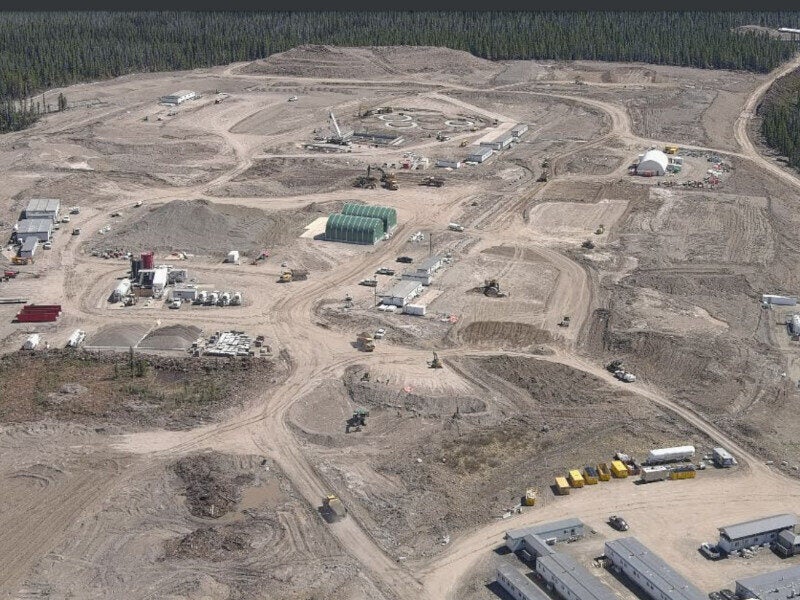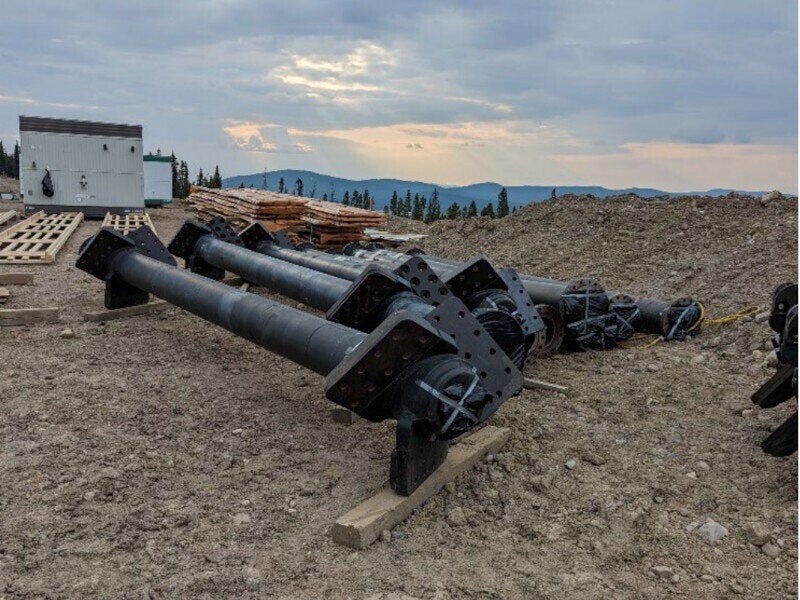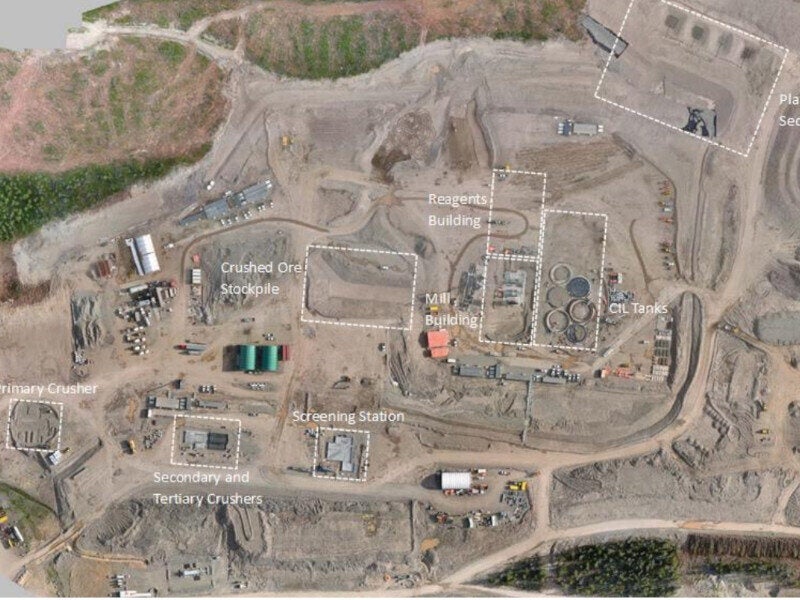The Blackwater gold project is an open pit mining project being developed in British Columbia, Canada, by Artemis Gold.
Artemis Gold acquired the project from New Gold in 2020 and completed the pre-feasibility study in 2020 while the feasibility study of the project was completed in September 2021.
The project has a mine life of 22 years with an initial capital investment of C$645m as per the 2021 feasibility study.
The construction work commenced in September 2022 while the first gold pour is expected in the second half (H2) of 2024.
Project development
The Backwater gold project will be developed in phases. The first phase will involve the development of a six million tonnes per annum (mtpa) throughput operation. Phase two will expand production to 12mtpa ramping up in year six.
Phase three will expand production to 20mtpa, ramping up production in year 11. Phase four will involve the end of the mining years with rehandling and processing of stockpiled ores.
Project location
The Blackwater gold project is located in the central region of British Columbia, approximately 112km, south-west of Vanderhoof. The Blackwater claim block comprises 76 mineral cells covering an area of 30,791ha.
Geology and mineralisation
The project site is composed of volcanic units, including breccias, rhyolitic tuff, and andesite. These volcanic layers are divided into a Cretaceous-aged lower sequence hosting the Blackwater deposit and an upper sequence of post-mineral Eocene rocks. The lower and upper volcanic sequences form a gentle north-eastward-dipping section underlain by mudstones, fine sandstones, and conglomerates from the late Jurassic bowser lake group.
Mineralisation is found in felsic to intermediate volcanic rocks that have undergone significant silicification and hydrofracturing. This is associated with widespread stockwork veining and the dissemination of sulphide minerals.
Reserves
The Blackwater gold project is estimated to contain a proven and probable reserve of 334.3 megatons (Mt) grading, 0.75g/t gold (Au) and 5.8g/t silver (Ag).
Mining method
The Blackwater gold project will follow conventional open-pit methods involving drilling, blasting, loading, and hauling with open-pit operations running for 17 years. Mining will be carried out in 10m benches, with berms placed at every two benches.
The open pit will be developed through a series of pushbacks, starting with the extraction of suitable waste rock for construction while uncovering high-grade material near the surface in the first stage.
The second phase will focus on mining higher-grade ore with a lower strip ratio to provide mill feed during the initial project years. The subsequent stages will involve expanding the pit northward to access progressively deeper ore deposits.
For the initial production, 400t hydraulic shovels and 190t payload haul trucks will be used for mining. As production ramps up, larger 550t shovels and 220t payload haul trucks will be added to the fleet.
Ore processing
The run of mine ore will undergo three-stage crushing in a primary gyratory crusher, a secondary cone crusher, and two tertiary cone crushers.
The crushed ore will be conveyed from the stockpile to a single ball mill for grinding and gravity concentration using centrifugal concentrators. The ground ore will undergo intensive cyanide leaching to recover gold from the gravity concentration with a residence time of 48 hours.
Carbon-in-leach adsorption of gold and silver will be performed in a carousel unit. The loaded carbon will be processed in 12t batches in an elution and electrowinning circuit.
Gold and silver will be recovered in the electrowinning circuit from the elution solution. The metallic precipitate product will be dried and smelted in a furnace to produce the final dore bullions.
Site infrastructure
The project can be accessed from highway 37, via the Kluskus Forest Service Road. A new 16km road will also be constructed to replace the existing exploration access road to the site.
A railway line is also in place adjacent to Vanderhoof. In addition, Vanderhoof, Quesnel and Prince George, which are located less than 500km distance to the mine, have bases that can provide helicopter access to the project area.
The project will receive its power supply from BC Hydro’s grid via a 135km long 230kV transmission line. Emergency power will also be available from diesel generators.
Wells will be established near the new camp area to provide water for the temporary and operational camps. Additionally, fresh water for the project will be drawn from Tatelkuz Lake, located around 20km north-east of the mine site.
A 250-bed camp is already on-site, and a new 240-bed camp will be built. The existing camp will accommodate construction personnel, while the new one will house operating personnel.
A high-capacity fibre optic cable will be installed alongside the primary transmission line to ensure robust telecommunications connectivity at the site.
Contractors involved
Sedgman Canada is the engineering, procurement, and construction contractor for the mine processing plant of the Blackwater gold project.
Falcon Drilling. Paycore Drilling, Tech Drilling, Boart Longear, and Hy-Tech Drilling are responsible for all the drilling activities.
Inspectorate Exploration and Mining Services has conducted preliminary metallurgical testing on samples from three 2009 drill holes at the project in early 2010.
The feasibility study was prepared by Ausenco Engineering (Canada). The company was also responsible for the processing cost estimates for the project. The mining cost estimates were prepared by Moose Mountain Technical Services.
Knight Piesold, a consultant, completed the geotechnical and hydrogeological evaluation for the project.
Allnorth, an engineering and construction services company, was responsible for the cost estimates of the off-site infrastructure.
Other key contributors to the study include LORAX Environmental Services, ERM Consultants Canada, and JAT Metco.






